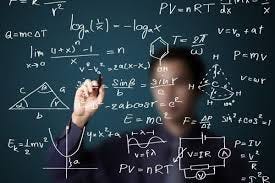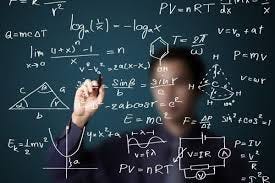By J.W. Rich
In a series of two letters that Carl Menger wrote to Leon Walras in 1883 and 1884, Menger wrote:
“I do not belong to the believers in the mathematical method as a way to deal with our science. I am of the opinion that mathematics is mainly a way to give an example or demonstration, but not to do the research itself . . . Mathematics is not a method for, but rather an ancillary science in, economic research . . .”
“We are not investigating quantitative proportions, but, on the contrary, also the ESSENCE of economic phenomena. How shall we attain knowledge of this essence (for example, the essence of values, the essence of rent, of entrepreneurial profit, of the division of labor, etc.), by the means of mathematics? Thus, I can see much wrong with using the mathematical ‘method’ for the establishment of LAWS that govern economic phenomena . . .”
“If we are to have knowledge of the laws which govern the exchange of goods, those things which stand in causal connection . . . then we must go back to the needs of men, to the importance which the satisfaction of needs have for men, to the quantities of the individual goods which are in the possession of the individual economic subjects, to the subjective importance (the subjective values) which concrete quantities of goods have for the individual subjects, etc. . . .”
Menger and Walras were both two of the most influential economists of the 19th century for their respective parts in the Marginal Revolution. Walras specifically garnished fame for his formulation of marginal utility through mathematical principles, and was partially the cause for the large-scale adoption of mathematics in economics. Menger finds Walras’ reliance of mathematics for the basis of his economic theory to be problematic, however. For Menger, the task of economics is not just to discern the “Größenverhältnisse” or numerical relationship between our chosen variables, but “das wesen” or the essence and being of what it is that we are examining. We can construct a mathematical equation to represent the demand for housing, but how could such an equation represent the dynamic market process of choice and action that individuals partake in every day?
We can illustrate the distinction Menger makes between mathematical relationships and true economic understanding by examining two different approaches to a foundational concept of monetary theory: the demand for money. First, we will look at the treatment Mises gives it in his economic treatise, “Human Action”:
“Media of exchange are economic goods. They are scarce; there is a demand for them. There are on the market people who desire to acquire them and are ready to exchange goods and services against them. Media of exchange have value in exchange. People make sacrifices for their acquisition; they pay "prices" for them. The peculiarity of these prices lies merely in the fact that they cannot be expressed in terms of money. In reference to the vendible goods and services we speak of prices or of money prices . . . There exists a demand for media of exchange because people want to keep a store of them. Every member of a market society wants to have a definite amount of money in his pocket or box, a cash holding or cash balance of a definite height. Sometimes he wants to keep a larger cash holding, sometimes a smaller; in exceptional cases he may even renounce any cash holding . . . Their cash holding is not merely a residuum, an unspent margin of their wealth. It is not an unintentional remainder left over after all intentional acts of buying and selling havoc been consummated. Its amount is determined by a deliberate demand for cash” (Human Action, pg. 398-399)
Mises explains to us that people desire to hold money “because people want to keep a store of them”. This amount of money held can increase or decrease according to the degree that individuals wish to hold money. The amount of money an individual holds is not a random accident, but a conscious decision on their part to hold a definite sum in their cash balances. Additionally, the “price” for acquiring money to hold cannot be expressed in terms of one good (as is the case when trading goods for money), but is expressed in terms of all the goods for money itself. It does not have a single price, but many varying “prices”.
In contrast, let us examine the demand for money as presented by the Cambridge Equation, as formalized by A.C. Pigou:
Md = kPY
Md = Aggregate Demand for Money
Y = National Income
P = Price Level
k = Proportion of national income that individuals wish to hold
In the Cambridge equation, the aggregate level of cash balances is determined by the three variables on the righthand side of the equation The first is the National Income, or the total amount of money received by individuals to spend. The second is the Price Level, or the summarized average of all prices in the economy. The last is the proportion of national income that individuals wish to hold, which may also be described as the Marginal Propensity to Hold Money. The product of these three variables results in the aggregate demand for money.
The differences between these two approaches are stark, to say the least. Mises focuses on the individual and their conscious intentions and purposes that result in his demand for money. We can observe individuals in the real world holding cash balances and this gives us an explanation for this phenomenon. In contrast, the Cambridge Equation gives us a mathematized version of this concept, but reveals nothing to us about the motivations or desires an individual has that induce him to hold money in the first place. Given values for the righthand variables above, we can directly calculate the amount of cash that individuals will collectively hold, but this numerical result is all that it gives us. Despite the mathematical precision of our result, we have gained no further economic insight at all to greater explain the phenomena of the demand for money. While the formalized equation that the Cambridge approach gives us can lure us into a false sense of understanding, in reality, it only gives us a surface-level view – or in Menger’s words, the “Größenverhältnisse” – and nothing of the greater substance involved.
This singular example provides just the type of ersatz knowledge that Menger warned Walras about. Mathematics can provide a quantitative formalization of economic concepts, but human beings are not quantitative creatures. We are teleological creatures who make purposeful, conscious decisions. No matter how many variables or numbers are grandiosely displayed in an equation, pure mathematics can never capture that fact. This doesn’t mean that we have to rid economics of all mathematics in the name of purification, but that its proper place should be recognized. It is a tool, which can be useful in some circumstances and obfuscating in others, just like any other tool. Just as the misuse of any other tool frustrates the achievement of one’s ends, so too does the overreliance on mathematics frustrate our end of understanding the nature of the economic realities we daily observe around us.
Discover New Opportunities
Click here for the Austrian Economics Discord Server.
Click here for the Austrian Economics Discord YouTube Channel.
Click here to get your very own “Swolerno” premium T-shirt for only 25 smackers! Available in 3 different colors.






could you provide some links or sources to these letters
“If it cannot be measured, it does not exist.” - Einstein